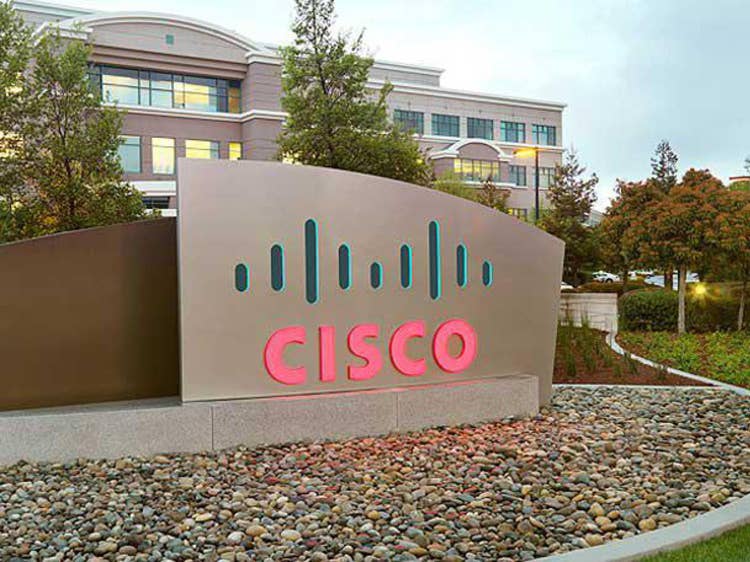Cisco Announces Hybrid Work Option For Every Employee
‘Our emphasis is going to be on providing the utmost level of flexibility and ensure that people feel like they have an equal voice to the meeting, regardless of their location or geography, and make sure their well-being is being thought about as a high priority, rather than just productivity,’ Cisco’s SVP Jeetu Patel tells CRN.

Cisco Systems will be transitioning to a fully hybrid work model for all its 75,000 global employees in yet another sign of how the pandemic has forced companies to rethink their own workforces.
The networking giant said that its employees adapted well to the work-from-home directive that came about as a result of the COVID-19 pandemic in 2020. As part of its new policy, San Jose, Calif.-based Cisco isn’t setting a mandate from the top down on numbers of days spent in or out of the office for any employee or team moving forward, Fran Katsoudas, Cisco’s chief people, policy and purpose officer, said in a blog post to Cisco employees.
“Whether that means you work five days a week at home and gather with your team for activities and connection every once in a while, or you are in the office five days a week leveraging the collaborative office configuration and technology to connect to your colleagues around the world – every Cisco employee will be hybrid,” Katsoudas said in her blog post published Thursday.
[Related: Cisco Closes Socio Labs Buy In Effort To Boost Webex Events ]
Jeetu Patel, Cisco’s senior vice president and general manager, security and applications group, told CRN that about 63 percent of Cisco employees were in the office three to five days a week prior to the pandemic. Now, 77 percent of Cisco employees plan on working outside of the office three to five days a week post-pandemic.
“We want to make sure that employees are encouraged to not feel like second-class participants, no matter where they come from,” Patel said. “Our emphasis is going to be on providing the utmost level of flexibility and ensure that people feel like they have an equal voice to the meeting, regardless of their location or geography, and make sure their well-being is being thought about as a high priority, rather than just productivity.”
Patel said that hybrid work has to be addressed from a technology, culture, and leadership perspective. Cisco’s own hybrid approach to working will require trust and transparency. To that end, the company is introducing what it is calling Collaboration Commitments, which are expectations and beliefs laid out for individuals, leaders, and teams around accountability, inclusion, and well-being.
The hybrid work model will require employees to have secure access and collaboration solutions from any location. Cisco has been on its mission to make its popular Cisco Webex collaboration platform more inclusive for remote meeting participants and those returning to the office. Cisco rolled out more than 800 new Webex features and capabilities since last September, many of which are tackling the problem associated with meeting attendees working from home or from a location outside of the office feeling like an outsider in the meeting.
Cisco’s focus on technology will help companies bridge the divide between employees in the office and those in remote locations, said Joe Berger, senior director of Cisco partner World Wide Technology’s (WWT) digital workspace practice.
“With [features] like People Focus, if I’m a remote participant, I can see all the individual faces of the people sitting in the conference room. Innovations like real-time translation and transcription services just enhances the overall meaning experience for everyone that isn’t physically in the same room anymore,” Berger said.
WWT, for its part, is embracing a hybrid work policy for its own company and is helping its customers put the right solutions in place to empower their end users to have an inclusive working environment, both inside and outside the office, Berger said.
“As we go more to the hybrid model, these newer tools become a lot more important for things like equality and inclusion because you’ve got to make sure that the people who aren’t physically in the office still have the same voice,” he said. ”That’s really what companies like Cisco are trying to solve for.”
In addition to collaboration technologies, hybrid work environments will require higher levels of security to address the expanded attack surface of new user locations and devices. Cisco’s unified security platform, SecureX, has been built into every Cisco security product, Patel said.
Cisco’s transition to let enterprises access networking and security technologies from the cloud is central to the company’s hybrid work approach, Patel said.
“Being in the cloud just provides you a level of agility that’s extremely important. But it also is one of those things that’s fundamentally changed security postures,” he said. “If done right, the cloud can be stronger [for security] and there’s a lot that you can do with privacy and compliance in the cloud … you can actually help people stay protected and safe and secure.”
As for the company’s real estate, Cisco will be re-thinking the office setup to make it more conducive to huddle spaces and small collaboration rooms, as well as hot desking, Patel said. About 95 percent of the company’s pre-pandemic workspace was allocated to individual employees, Cisco said.
“We must transform the purpose of our offices to be centers of collaboration – places that people can come together for rituals, collective work, and connection,” Katsoudas said. “In the hybrid world we’ll best utilize our offices by transforming them into spaces optimized for teams to innovate, collaborate, and connect.”